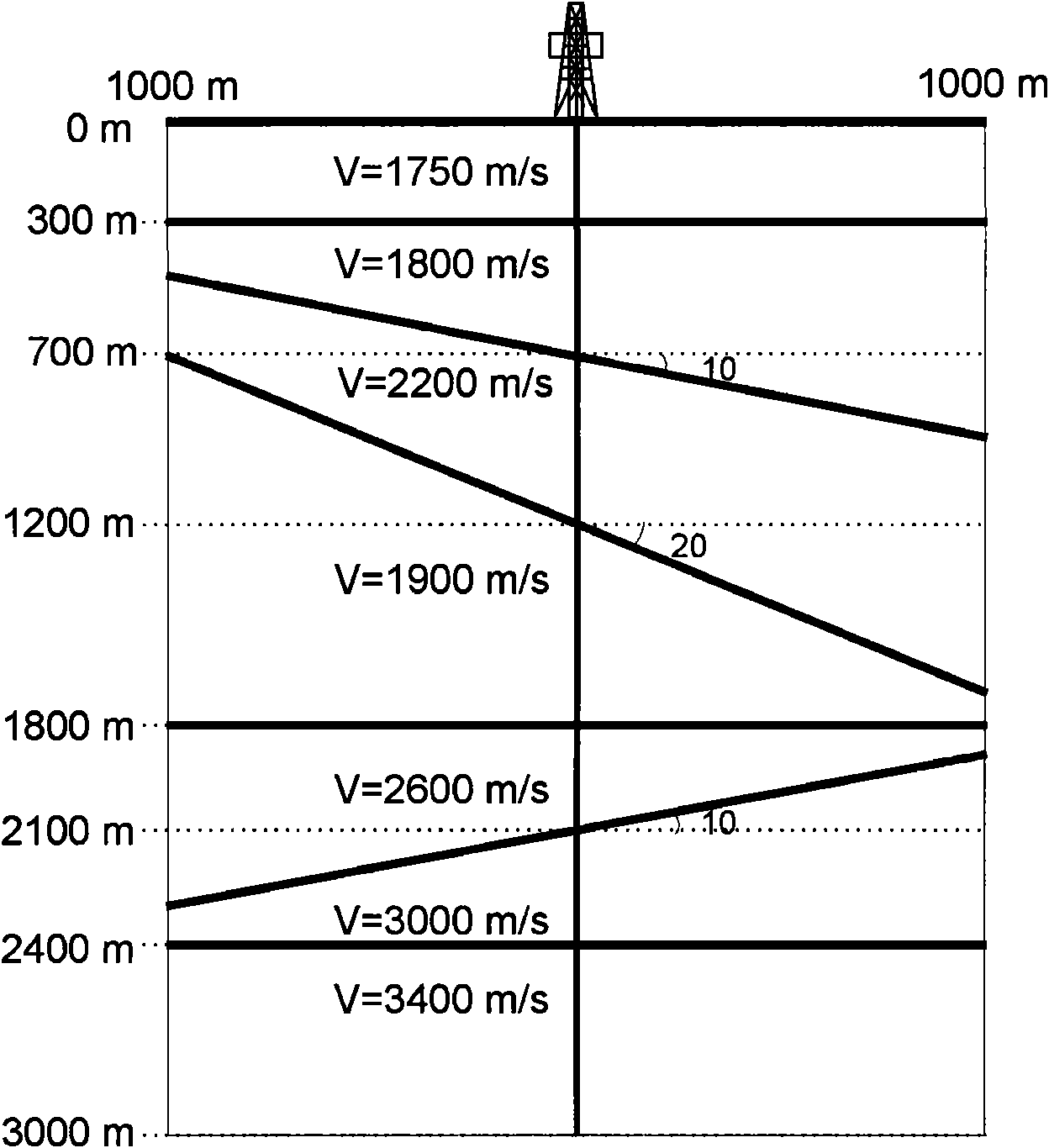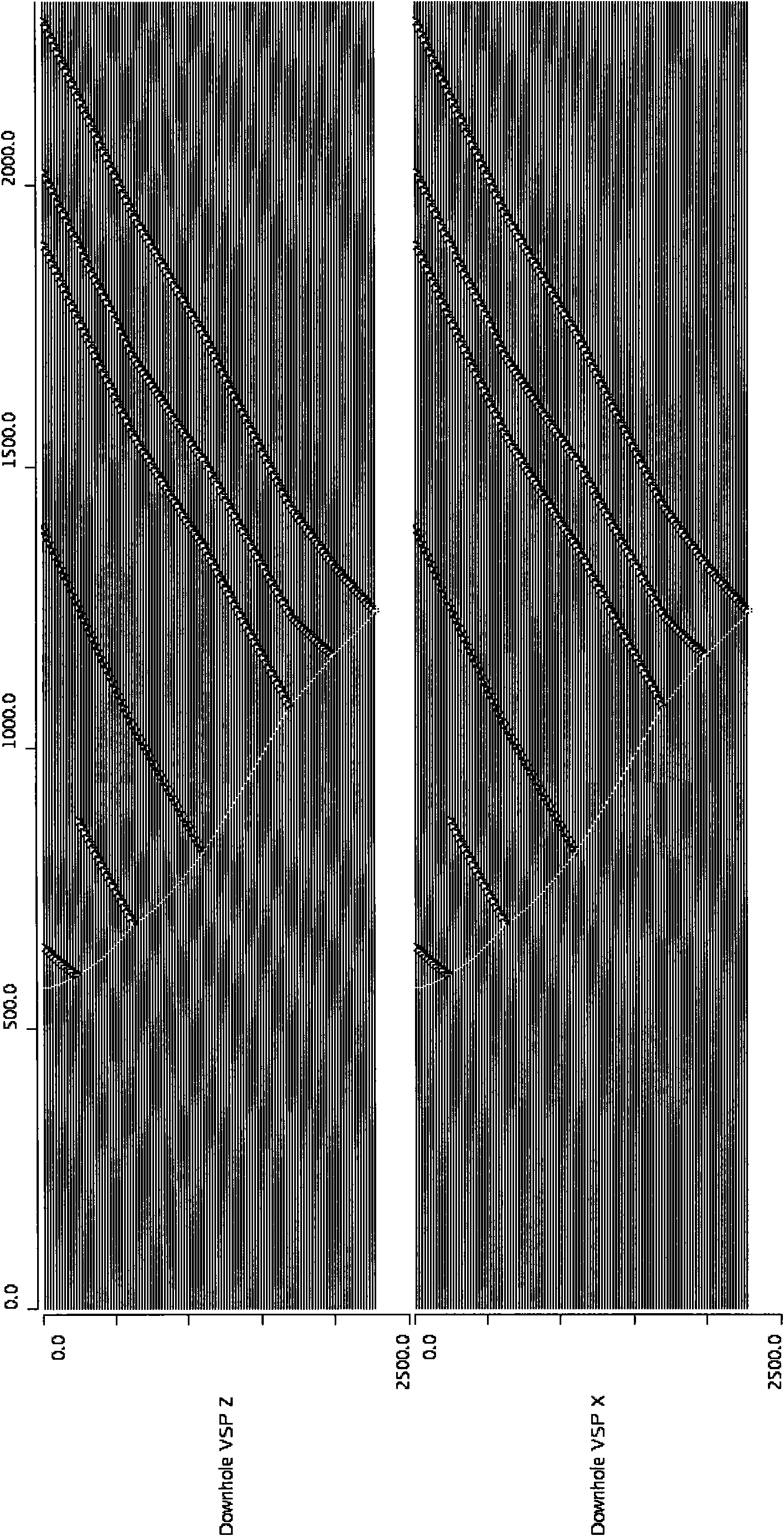Method for improving imaging quality of vertical seismic profile
A vertical seismic profile and imaging quality technology, applied in seismic signal processing, seismology for logging records, etc., can solve the problem that the dip angle of the reflection layer has a great influence on the accuracy, achieve the effect of reducing the impact and improving the imaging quality
- Summary
- Abstract
- Description
- Claims
- Application Information
AI Technical Summary
Problems solved by technology
Method used
Image
Examples
Embodiment Construction
[0039] Further illustrate the present invention below in conjunction with accompanying drawing.
[0040] Artificially stimulate seismic waves on the surface, place seismic wave receiver strings in the well to receive seismic wave field signals, and then transmit them to ground recording instruments by cables to record VSP seismic wave field. The excitation position includes zero bias and non-zero bias.
[0041] The data used in the embodiments of the present invention come from a two-dimensional structural model. figure 1 The construction model is given, figure 2 Based on the theoretical three-component VSP upgoing wavefield data generated by this model, the distance from the shot point to the wellhead is 1000 meters.
[0042] The first arrivals of downgoing P-waves were picked up from the recorded zero-bias and non-zero-bias data respectively. Then, the layers are divided by the acoustic logging data, and the velocity of each layer is inverted by the first arrival time of...
PUM
 Login to View More
Login to View More Abstract
Description
Claims
Application Information
 Login to View More
Login to View More - R&D
- Intellectual Property
- Life Sciences
- Materials
- Tech Scout
- Unparalleled Data Quality
- Higher Quality Content
- 60% Fewer Hallucinations
Browse by: Latest US Patents, China's latest patents, Technical Efficacy Thesaurus, Application Domain, Technology Topic, Popular Technical Reports.
© 2025 PatSnap. All rights reserved.Legal|Privacy policy|Modern Slavery Act Transparency Statement|Sitemap|About US| Contact US: help@patsnap.com



